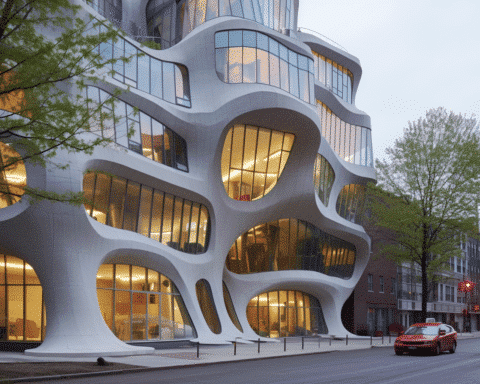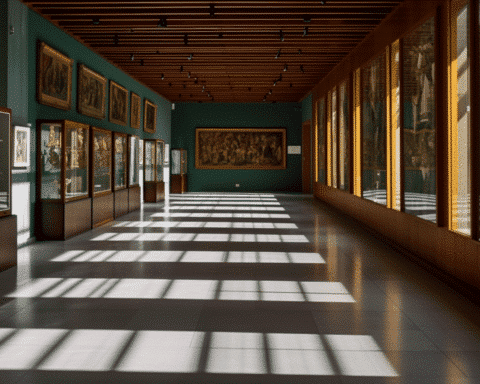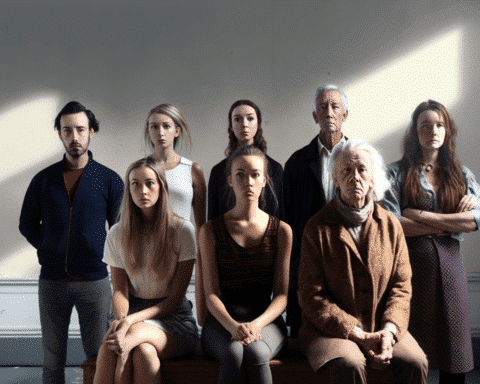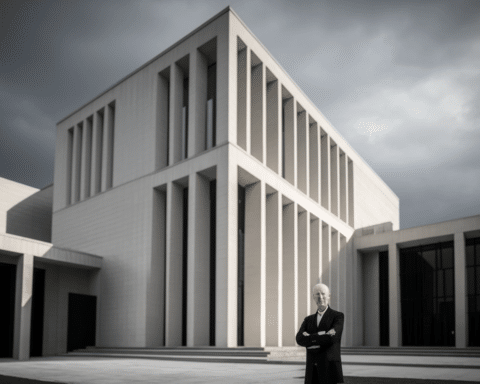In Brady Corbet’s cinematic masterpiece, The Brutalist, architecture becomes a profound metaphor for identity, loss, and resilience. This sweeping epic follows the fictional life of Holocaust survivor and architect László Tóth as he rebuilds his life in post-war America, weaving an intricate narrative of love, ambition, and the lingering scars of history. With Adrien Brody’s compelling performance and Judy Becker’s evocative designs, The Brutalist is a striking exploration of artistry and humanity.
A Life Built on Foundations of Loss
László Tóth’s story begins in 1947 when he arrives in the United States, haunted by the horrors of a concentration camp. Alongside his wife, Erzsébet, a fellow survivor, Tóth embarks on a journey to rekindle his architectural career. Tasked with designing a grand institute for industrialist Harrison Lee Van Buren (Guy Pearce), Tóth confronts the complexities of power dynamics and personal sacrifice. “Promise me you won’t let it drive you mad?” Erzsébet pleads. Tóth’s strained promise hints at the consuming obsession that defines his character.
Architecture as a Mirror of the Soul
Judy Becker, the film’s production designer, masterfully constructs Tóth’s world through his creations. Becker explains her process as “method design,” delving into Tóth’s experiences to craft furniture, interiors, and buildings that reflect his psyche. The institute at the heart of the story is a monolithic concrete structure, its design influenced by Bauhaus principles and Brutalist architects like Marcel Breuer and Tadao Ando. “It’s an almost immersive experience,” Becker reveals, incorporating claustrophobic spaces to echo the barracks of concentration camps.
This meticulous approach enhances the film’s authenticity. “To have the material and form represent layers of storytelling is so meaningful,” said Adrien Brody. The institute becomes a poignant symbol of imprisonment and freedom with its cruciform silhouette and chapel centerpiece.
The Weight of Creativity
The film’s exploration of creativity delves deep into the burdens and triumphs of artistic pursuit. Tóth’s architecture represents his inner struggles and aspirations, a “spiritual quest” as described by Brody. “This Brutalist structure is symbolic of the shell of a man that he is,” he noted, emphasizing the emotional weight behind Tóth’s designs.
Corbet’s narrative also critiques how external forces shape creative legacies. Van Buren’s patronage offers Tóth opportunities but comes with a heavy cost, mirroring the compromises many artists face.
A Cinematic and Architectural Triumph
Shot on VistaVision, The Brutalist evokes the grandeur of mid-20th-century cinema while addressing timeless themes. Its architecture, both literal and metaphorical, serves as a canvas for the complexities of its characters. The institute becomes an enduring testament to Tóth’s identity and a stark reminder of his past.
Adrien Brody encapsulates the universal artist’s struggle: “All artists… are somehow pushing to break past those boundaries and build something of lasting significance.” This sentiment is reflected in Corbet’s direction, Becker’s designs, and Brody’s performance, culminating in a film that is as much about human resilience as it is about art.
A Legacy Carved in Concrete
The Brutalist is more than a film—it is a testament to the enduring power of art to confront trauma and transform it into beauty. As Brody eloquently states, “The beauty of film is to leave behind something indelible.” Through its exploration of architecture, identity, and redemption, The Brutalist achieves a cinematic structure as timeless as the human spirit.





